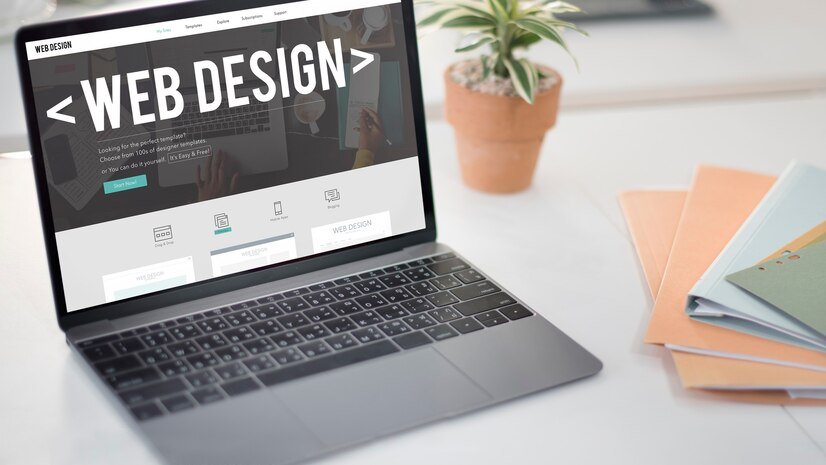Elevate Designs Figma to WordPress
Transforming Figma designs into fully functional WordPress websites requires seamless integration and meticulous attention to detail. This process involves translating the visual elements and interactive components crafted in Figma into a live, responsive WordPress environment. Leveraging the power of Figma’s design capabilities and WordPress’s robust development framework, businesses and designers can ensure a smooth transition from concept to reality. Let’s explore how Figma to WordPress Design bridges this gap, emphasizing the repeated title keywords throughout:
Also read Figma to HTML Seamless Design Conversion
Transform your design visions into dynamic WordPress websites with our comprehensive Figma to WordPress Design course. Master Figma’s intuitive interface and robust feature set to craft pixel-perfect designs that seamlessly integrate with WordPress. Learn advanced techniques for responsive layouts, captivating visuals, and optimized user experiences. Transition effortlessly from Figma to WordPress as you bring your static designs to life. Customize themes, layouts, and multimedia content to create professional-grade websites that captivate audiences. Whether you’re a seasoned professional or a budding enthusiast, our course equips you with the skills to unlock endless possibilities in web design and development. Join us and turn your design dreams into reality today.
1.Getting Started:
Understanding the Figma Interface: Familiarize yourself with the tools and features of Figma, including artboards, layers, and design components.
Setting Up WordPress: Learn how to install WordPress on your local machine or web server, and configure the basic settings to get started.
2.Designing Your Website in Figma:
Planning Your Website: Define the goals, target audience, and structure of your website.
Creating Wireframes: Sketch out the layout and structure of your website using wireframes in Figma.
Designing Visual Elements: Dive into designing the visual aspects of your website, including colors, typography, and imagery.
3. Building Your Website in WordPress:
Choosing a WordPress Theme: Explore different WordPress themes and select one that aligns with your design vision.
Customizing Your Theme: Learn how to personalize your chosen theme by modifying colors, fonts, and layout settings
Adding Content: Populate your website with text, images, and multimedia content by creating pages and posts in WordPress.
Enhancing Functionality with Plugins: Extend the capabilities of your website by installing and configuring WordPress plugins for features such as contact forms, sliders, and social media integration
4.Integrating Figma Designs into WordPress:
Exporting Assets: Export design assets from Figma, including images, icons, and CSS stylesheets.
Implementing Design Elements: Incorporate your Figma designs into your WordPress theme using HTML, CSS, and JavaScript.
Testing and Iterating: Review your website’s design and functionality across different devices and browsers, and make necessary adjustments.
Certainly! Here are 10 plugins for Figma to WordPress design:
Discover the Top 8 Web Development Frameworks
1.Figmify:- A comprehensive plugin that seamlessly integrates Figma designs into WordPress. It allows for easy import of Figma frames, styles, and assets directly into your WordPress website.
2.Figma to WP: This plugin offers a straightforward way to export Figma designs to WordPress. It preserves layers, fonts, and styles, ensuring fidelity between your design and the final website.
3.WP Figma Sync:- With this plugin, you can embed Figma designs directly into your WordPress posts and pages. It’s perfect for showcasing your design process or presenting mockups to clients.
4.Figma Embed – With this plugin, you can embed Figma designs directly into your WordPress posts and pages. It’s perfect for showcasing your design process or presenting mockups to clients.
5.Figma Image Optimizer – Automatically optimize images exported from Figma for WordPress, reducing file size without sacrificing quality. This helps improve website performance and loading times.
6.Figma Design Library – Access a library of pre-designed Figma components and templates directly within WordPress. Speed up your design process and maintain consistency across your website.
7.Figma Importer – Import entire Figma files or specific frames into WordPress with ease. This plugin supports various file formats and ensures smooth integration of your designs.
8.Figma Styler – Customize Figma designs directly within WordPress using this plugin. Adjust colors, fonts, and other styling elements without leaving your website’s admin interface.
9.Figma Forms – Design and implement custom forms in Figma, then seamlessly integrate them into your WordPress website using this plugin. It streamlines the form creation process and ensures design consistency.
10.Figma Widget – Add a Figma widget to your WordPress dashboard for quick access to your designs. This plugin provides shortcuts for importing, syncing, and managing Figma files directly within WordPress.

FAQ:-
Q: Do I need prior experience in web design or development to follow this tutorial series?
A: While prior experience is helpful, this tutorial series is designed to be beginner-friendly, guiding you through each step of the process in a clear and accessible manner.
Q: Can I use a different design tool instead of Figma?
A: Absolutely! While this tutorial focuses on Figma, you can adapt the principles and techniques to other design tools such as Adobe XD or Sketch.
Q: Are there any costs involved in building a WordPress website?
A: While WordPress itself is free, you may incur costs for web hosting, domain registration, premium themes, and plugins. However, there are also many free resources available to help you get started with WordPress on a budget.



